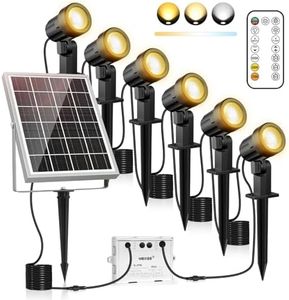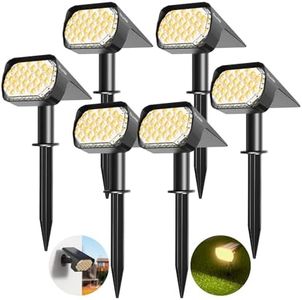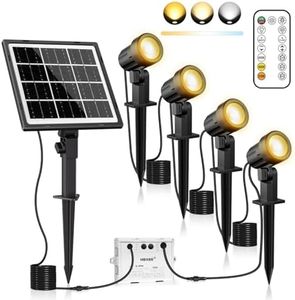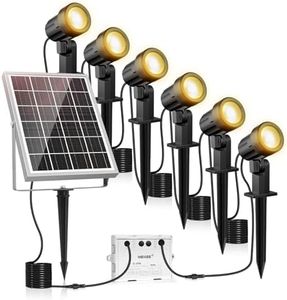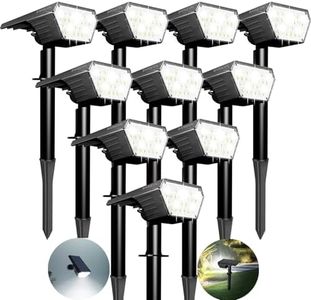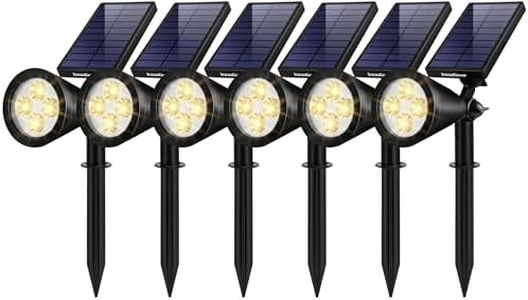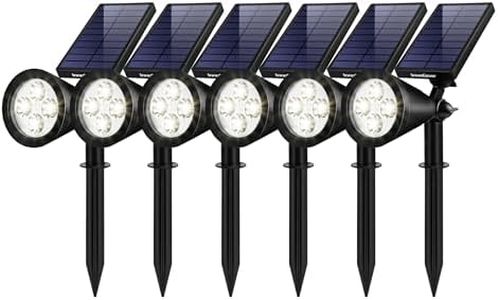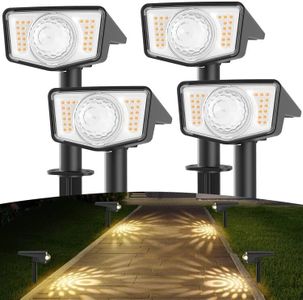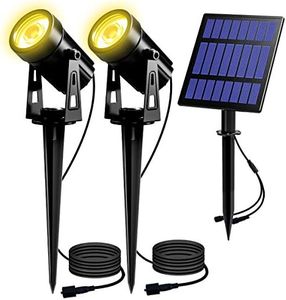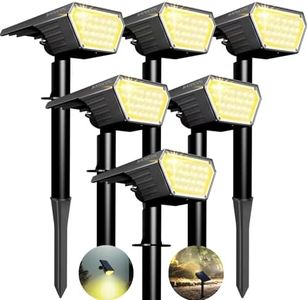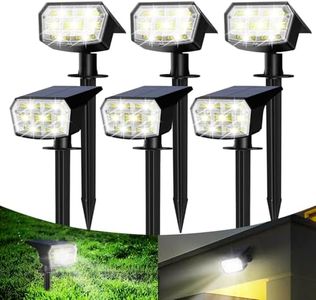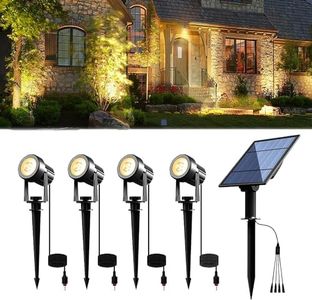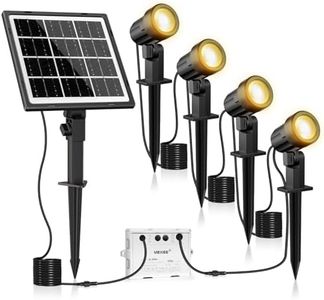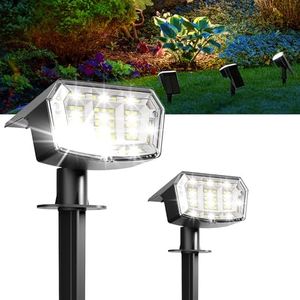We Use CookiesWe use cookies to enhance the security, performance,
functionality and for analytical and promotional activities. By continuing to browse this site you
are agreeing to our privacy policy
10 Best Solar Spot Lights
From leading brands and best sellers available on the web.Buying Guide for the Best Solar Spot Lights
Solar spot lights are a great eco-friendly choice for outdoor lighting, using sunlight to charge during the day and automatically lighting up dark areas at night. Choosing the right model means understanding your lighting needs, how much sunlight your location gets, and where you plan to install the lights. Think about what you want to illuminate and how bright you want the area to be—this will help guide your choice. Remember, sometimes more isn't always better; the best solar spot light is one that suits your unique requirements, is easy to install, and stays reliable over time.Brightness (Lumens)Brightness measures how much light the spot light will produce and is usually indicated in lumens. A low lumen range (20-100 lumens) gives a soft glow good for accent lighting or marking pathways. A mid-range light (100-300 lumens) works well for general garden lighting, while high lumen lights (300+ lumens) are best for highlighting trees, flags, or security. The right brightness depends on what you'll be lighting—gentle highlights need less, while showing off large features or providing security needs more.
Battery CapacityBattery capacity tells you how long the solar spot light can operate after a full day's charge, usually measured in milliamp-hours (mAh) or by the number of hours it can stay lit. Smaller batteries run for around 4-6 hours, ideal if you only want light soon after sunset. Larger capacities can last 8-12 hours or more, which is best if you need illumination deep into the night or during cloudy days. Consider how late you want your lights to stay on to guide your choice.
Solar Panel EfficiencySolar panel efficiency indicates how well the panel converts sunlight into electricity. Panels with lower efficiency may need more direct sunlight to fully charge, while higher-efficiency panels make the most of limited sunlight and charge faster. If your installation spot gets uninterrupted sunlight, a standard panel may be enough. For shady areas or less sunny climates, pick a light with a higher-efficiency panel to ensure dependable performance.
Weatherproof RatingThe weatherproof rating, shown as IP (Ingress Protection) ratings like IP65 or IP67, shows how resistant the light and its components are to water and dust. A basic rating (IP44) can handle occasional rain, while higher ratings (IP65 or above) are better for harsh weather or permanently exposed areas. Match the weatherproof level to your local conditions—use higher-rated lights for exposed gardens, and lower-rated ones under some cover.
Adjustability and Mounting OptionsAdjustability refers to how much you can change the direction and angle of the light and panel, while mounting options include ground stakes, wall mounts, or pole mounts. More adjustable lights allow you to target specific features, and flexible panel positions help capture more sunlight. If your setup location or lighting target changes, adjustable and versatile mounting is key. Simpler or fixed models are fine if you're sure about placement and don’t need to move things.
Light Color (Color Temperature)Light color, measured in Kelvin (K), affects the 'look' of the illumination. Warm white (around 2700K-3500K) gives a soft, cozy glow, ideal for decorative or pathway lighting. Cool white (around 5000K-6500K) creates a brighter, more focused light, suitable for security or highlighting plants and features. Pick the color temperature based on the mood and practical effect you want to achieve in your space.
